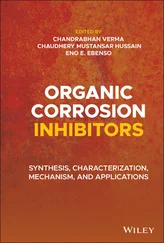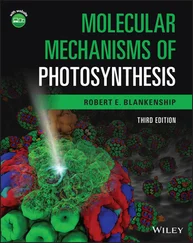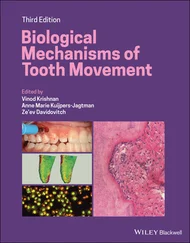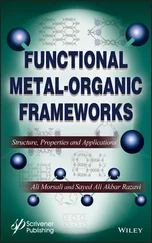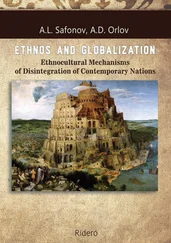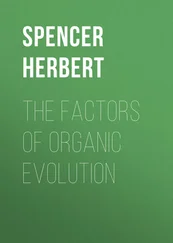5 Chapter 5FIGURE 5.1 General mechanism for the electrophilic aromatic substitution (EA...FIGURE 5.2 Formation of a stable arenium (σ‐complex) between hexamethylbenze...FIGURE 5.3 The full mechanism for the charge‐transfer aromatic nitration.FIGURE 5.4 Mechanism for the electrophilic substitution reaction of benzene ...FIGURE 5.5 Formation of a stable arenium (σ‐complex) between hexamethylbenze...FIGURE 5.6 Possible mechanism for the AlCl 3‐catalyzed electrophilic substitu...FIGURE 5.7 Possible mechanism for the AlCl 3‐catalyzed electrophilic aromatic...FIGURE 5.8 AlCl 3‐catalyzed electrophilic aromatic substitution of p ‐toluenes...FIGURE 5.9 (a) Reaction of antimony pentachloride (SbCl 5) with hexamethylben...FIGURE 5.10 Unexpected ring‐opening process in the AlCl 3‐catalyzed Friedel–C...FIGURE 5.11 FeCl 3‐catalyzed EAS reactions of arenes with aldehydes.FIGURE 5.12 FeCl 3‐catalyzed intramolecular EAS reactions of benzyl alcohol d...FIGURE 5.13 FeCl 3‐catalyzed regioselective EAS reactions of alkenes and poss...FIGURE 5.14 Mechanism for the FeCl 3‐catalyzed reaction of chlorobenzene with...FIGURE 5.15 The d π–pπ* back bonding between Fe(III) and the S=O bond in...FIGURE 5.16 Mechanism for AlCl 3‐catalyzed Friedel–Crafts reaction of benzene...FIGURE 5.17 Mechanism for AlCl 3‐catalyzed Friedel–Crafts reaction of benzene...FIGURE 5.18 Mechanism for AlCl 3‐catalyzed Friedel–Crafts reaction of benzene...FIGURE 5.19 Mechanism for acid‐catalyzed electrophilic substitution reaction...FIGURE 5.20 Mechanism for acid‐catalyzed electrophilic substitution reaction...FIGURE 5.21 Mechanism for an intramolecular electrophilic aromatic substitut...FIGURE 5.22 Mechanism for an electrophilic aromatic substitution reaction of...FIGURE 5.23 Mechanism for an intramolecular electrophilic aromatic substitut...FIGURE 5.24 Simplified and more subtle models for the charge distribution in...FIGURE 5.25 Common electron‐donating and electron‐withdrawing groups (EDG's ...FIGURE 5.26 The intermediate ortho ‐, meta ‐, and para ‐arenium ions which bear...FIGURE 5.27 Chlorination of alkylbenzenes: Directing effects of different al...FIGURE 5.28 Reaction of phenol with bromine: Para ‐directing effect of the hy...FIGURE 5.29 The intermediate ortho ‐, meta ‐, and para ‐arenium ions which bear...FIGURE 5.30 Mechanism for proton‐catalyzed isomerization of 1,2,4‐tri( t ‐buty...FIGURE 5.31 Mechanism for proton‐catalyzed dealkylation of 2,4‐dichlorocumen...FIGURE 5.32 Mechanism for acid‐catalyzed isomerization of α‐naphthalenesulfo...FIGURE 5.33 Metals (magnesium and lithium) facilitated electrophilic aromati...FIGURE 5.34 Metal directing groups (MDG's) facilitated lithiumation of arene...FIGURE 5.35 Reactions of substituted arenes with sBuLi followed by substitut...FIGURE 5.36 ortho ‐Metal directing group facilitated lithiumation and subsequ...FIGURE 5.37 Nucleophilic aromatic substitution (NAS) of a halobenzene via th...FIGURE 5.38 Mechanism for nucleophilic substitution of the carbon‐14 isotope...FIGURE 5.39 Nucleophilic substitution reaction of o ‐chlorotoluene with hydro...FIGURE 5.40 Nucleophilic substitution reactions of halobenzenes with cyanide...FIGURE 5.41 Nucleophilic substitution reactions of aryldiazonium (Ar– +N=N) f...FIGURE 5.42 Reaction of 2‐bromobenzoic acid with benzyl nitrile (C 6H 5CH 2CN) ...FIGURE 5.43 Nucleophilic aromatic substitution via the Meisenheimer complex....FIGURE 5.44 Reaction of 2,4‐dinitrochlorobenzene with hydrazine giving 2,4‐d...FIGURE 5.45 Nucleophilic substitution of 2,4‐difluoronitrobenzene with liqui...FIGURE 5.46 The azocoupling reaction between 1,3‐dinitrobenzene and aryldiaz...FIGURE 5.47 Structures of Combretastatin A‐4 (CA4) and modified analogues.FIGURE 5.48 Synthesis of the diaryl sulfide analogue of CA4 by nucleophilic ...FIGURE 5.49 The aryl‐sulfoxide‐containing nitrogen mustard and its in vivo r...FIGURE 5.50 Synthesis of a biomedically active aryl‐sulfoxide‐containing pol...FIGURE 5.51 Chemical synthesis of the inflammatory ibuprofen and the reactio...
6 Chapter 6FIGURE 6.1 Super and very good leaving groups.FIGURE 6.2 Possible resonance structures for phenoxide and acetate, accounti...FIGURE 6.3 Reaction of sodium azide and (2 S )‐2‐triflyloxyester in CH 3CN (an ...FIGURE 6.4 Reaction of trans ‐1‐bromo‐4‐methylcyclohexane and sodium hydrogen...FIGURE 6.5 Effect of steric hindrance on relative rate constants for the S N2...FIGURE 6.6 Effect of steric hindrance on relative rate constants for the S N2...FIGURE 6.7 Destabilization of the S N2 transition states by steric interactio...FIGURE 6.8 The S N2 reactions of hydroxide and water with bromomethane: compa...FIGURE 6.9 Energy profiles for the S N2 reactions in (1) a more polar protic ...FIGURE 6.10 Stabilization of the S N2 transition state by an unsaturated grou...FIGURE 6.11 (a) Molecular orbitals (MOs) in CH 3X (X = Cl, Br, or I) which ar...FIGURE 6.12 (a) Maximum overlap of a nucleophile orbital with the 2p z‐based ...FIGURE 6.13 (a) Molecular orbitals (MOs) in RCH 2X (X = Cl, Br, or I; R = alk...FIGURE 6.14 Occupied bonding molecular orbitals (MOs) in CH 2Cl 2which are fo...FIGURE 6.15 Reaction profile for the S N1 mechanism.FIGURE 6.16 The S N1 reactions of 2‐chloro‐2‐methylpropane in protic solvents...FIGURE 6.17 The S N1 rate constants for hydrolysis of various bromoalkanes....FIGURE 6.18 Energy profiles for rate‐determining steps of the S N1 reactions ...FIGURE 6.19 Reaction profiles for both S N1 and S N2 reactions of RCl, RBr, an...FIGURE 6.20 Mechanism and product development of the S N1 reaction.FIGURE 6.21 Stereoselectivity of the S N1 reactions.FIGURE 6.22 The S N1 and S N2 reactions of ( R )‐2‐bromobutane performed in diff...FIGURE 6.23 The S N1 (a) and S N2 (b) hydrolysis of benzyl chloride.FIGURE 6.24 The S N2 reaction of a Grignard reagent with ethylene oxide.FIGURE 6.25 (a) Regiospecific S N2 reaction of phenylmagnesium bromide with a...FIGURE 6.26 The S N2 reactions of alkyne anions with primary haloalkanes.FIGURE 6.27 The Gabriel synthesis.FIGURE 6.28 The S N2 reaction of triphenylphosphine (Ph 3P) with a primary hal...FIGURE 6.29 Neighboring group‐assisted nucleophilic substitution reaction of...FIGURE 6.30 Neighboring group‐assisted hydrolysis of mustard gas.FIGURE 6.31 Mechanism and stereochemistry for neighboring group‐assisted nuc...FIGURE 6.32 Neighboring group assisted nucleophilic substitution of trans ‐2‐...FIGURE 6.33 Mechanisms for the alcohol nucleophilic substitution reactions c...FIGURE 6.34 The S N2 mechanism for alkylation of guanine in a DNA molecule by...FIGURE 6.35 The intrastrand crosslink between nitrogen bases of a DNA chain ...FIGURE 6.36 Cyclic structures of α‐ and β‐D‐glucose and α‐ and β‐glycoside. ...FIGURE 6.37 Mechanisms for (a) retaining β‐glucosidases; and (b) inverting β...FIGURE 6.38 Mechanism for hydrolysis of bacteria walls polysaccharide by lys...FIGURE 6.39 Biosynthesis of geraniol through S N1 reactions.FIGURE 6.40 Biosynthesis of epinephrine from norepinephrine and S ‐adenosylme...FIGURE 6.41 An enzyme‐catalyzed S N2 reaction of an haloalkane.
7 Chapter 7FIGURE 7.1 The E2 reaction mechanism.FIGURE 7.2 The E2 reaction of 2‐bromo‐2‐methylpentane induced by different b...FIGURE 7.3 Steric hindrance of t ‐butoxide on the E2 reaction of 2‐bromo‐2‐me...FIGURE 7.4 Reactions of cis ‐ and trans ‐4‐( t ‐butyl)cyclohexyl tosylate with t FIGURE 7.5 The E2 reactions of trans ‐ and cis ‐1‐bromo‐2‐methylcyclohexane in...FIGURE 7.6 The E2 reactions of 1‐bromo‐1‐methylcyclohexane induced by differ...FIGURE 7.7 Stereochemistry for the E2 reactions of different stereoisomers o...FIGURE 7.8 (a) Anti‐coplanar arrangement of the C α─X and C β─H bond...FIGURE 7.9 Correlations of frontier molecular orbitals for the E2 reaction o...FIGURE 7.10 Syn ‐coplanar arrangement of the C α─X and C β─H bonds in...FIGURE 7.11 (a) Chair‐conformations of a halocyclohexane (X = Cl, Br, or I)....FIGURE 7.12 Basicity versus nucleophilicity for various species.FIGURE 7.13 E2 and S N2 reactions for an epoxide.FIGURE 7.14 Competition between E2 and S N2 reactions.FIGURE 7.15 Ethoxide ( −OEt) induced E2 reactions versus S N2 reactions ...FIGURE 7.16 The E1 reaction mechanism.FIGURE 7.17 The acid‐catalyzed dehydration of (a) 2‐methyl‐2‐butanol and (b)...FIGURE 7.18 Bell–Evans–Polanyi principle: dependence of activation energy on...FIGURE 7.19 Reaction profiles for E1 dehydrations of 2‐methyl‐2‐butanol and ...FIGURE 7.20 The acid‐catalyzed E1 dehydration of 1‐cyclohexylethanol.FIGURE 7.21 Reaction profiles for E1 reactions of haloalkanes.FIGURE 7.22 Mechanism for the E1 elimination of a tertiary butyl ether.FIGURE 7.23 Mechanism for the unimolecular syn ‐elimination of an ester.FIGURE 7.24 Examples for unimolecular syn ‐eliminations of esters: (a) ethyl ...FIGURE 7.25 Silyloxide elimination: (a) Base‐induced syn ‐elimination and (b)...FIGURE 7.26 Mechanism for zinc‐induced anti‐eliminations of vicinal dihalide...FIGURE 7.27 Mechanism for reductive anti‐elimination of vicinal alkane dihal...FIGURE 7.28 Reductive elimination of a chlorinated ethylene by metallic zinc...FIGURE 7.29 (a) Molecular orbitals (MOs) in CHCl 3which are formed by linear...FIGURE 7.30 Molecular orbital diagram for the base induced α‐elimination of ...FIGURE 7.31 Energy profile for a base‐initiated E1cb reaction.FIGURE 7.32 Elimination of NMe 3from a quaternary amine, which possesses an ...FIGURE 7.33 The FAD‐facilitated E1cb‐like elimination: a biological eliminat...FIGURE 7.34 An enzyme‐catalyzed E1cb elimination involved in biosynthesis of...FIGURE 7.35 The E1 mechanism for biosynthesis of limonene from linalyl dipho...
Читать дальше


